#thermoset
Text
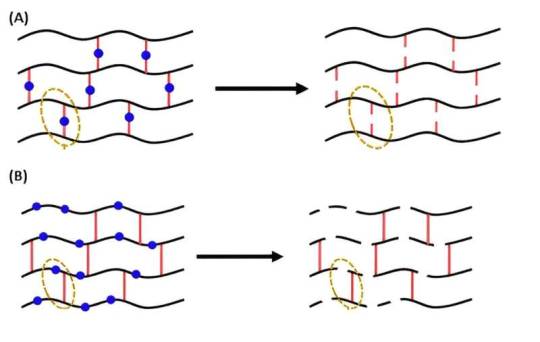
Scientists discover how to degrade and reform thermoset polymers without loss of function
A team of UK scientists has got a step closer to making several different types of plastic much easier to recycle using a method that could be applied to a whole range of difficult-to-recycle polymers, including rubbers, gels, and adhesives.
Thermoplastics and thermosets are two types of plastics that both consist of long chains of molecules called polymers but behave differently when heated.
Thermoplastics can be heated to high temperatures, poured into a mold then cooled to make the desired shape. They can subsequently be melted and reformed into other shapes when they are recycled. However, they can break when stretched or stressed.
Read more.
31 notes
·
View notes
Text
Because of their very different physical characteristics, thermoplastics and thermosets must be processed differently and are used in very different applications.
"Chemistry" 2e - Blackman, A., Bottle, S., Schmid, S., Mocerino, M., Wille, U.
#book quote#chemistry#nonfiction#textbook#physical characteristics#plastics#polymers#thermoplastic#thermoset#processing#application
0 notes
Text
https://www.dowellmoulds.com/blog/processes-for-molding-thermosetplastics-and-thermoplastics
#Dowell Moulds#plastic mould manufacturers in India#Injection molding#Compression molding#Transfer molding#Blow molding#Extrusion molding#Thermoset#Thermoplastic#Mold cavity#Gate#Pellets
0 notes
Text
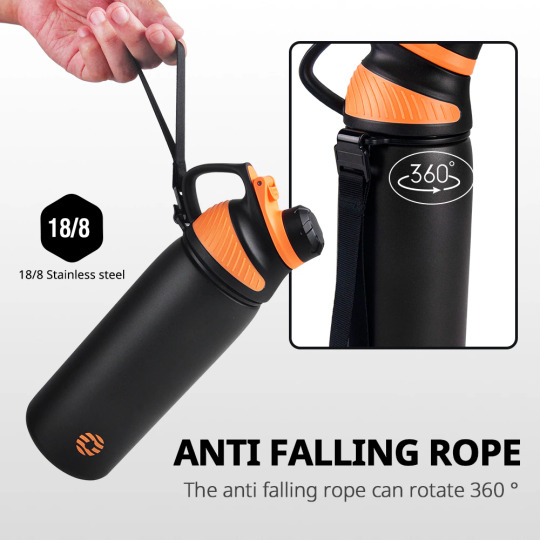
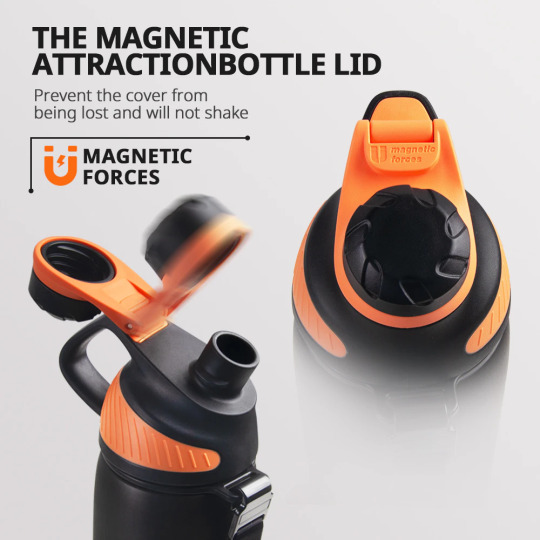



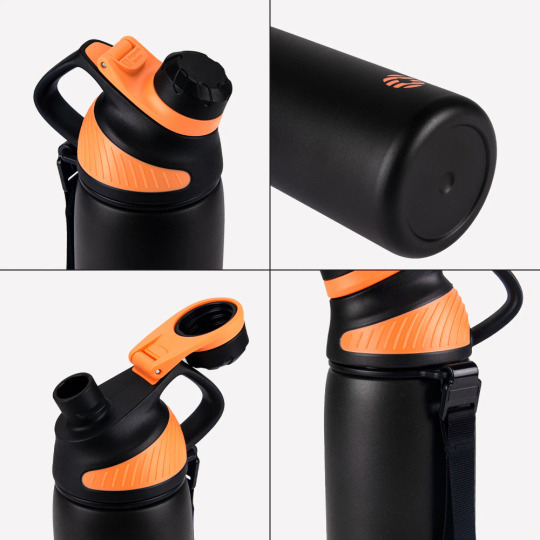
Top On Sale Product Recommendations!
FEIJIAN LKG Thermos Double Wall Vacuum Flask With Magnetic Lid Outdoor Sport Water Bottle Stainless Steel Thermal Mug Leak Proof.
Original price: USD 64.44
Now price: USD 22.17
Click & Buy :
#begouri store#aliexpress#amazon#thermalmug#thermalmugs#thermalmugph#thermalmughk#thermalmugenn#thermalmugcup#thermalmuglove#thermalmugskenya#thermalmugwithcoffee#thermalmugswithartprints#thermos#thermosbottle#thermoset#thermostat#thermosfoogo#thermosnation#thermosthursday#thermosmalaysia#thermostathousing#thermostatinstallation#fläsk#flask#flasks#flaskap#flaskset#flaskback#flaskepost
1 note
·
View note
Text
okay
time for studying and research
2 notes
·
View notes
Text
Introduction to Mould Manufacturing 2024
Plastic mould manufacturing is the process of creating mould or tools for the production of plastic parts. The mould are designed to shape and form plastic materials into specific shapes and sizes, allowing for the production of identical parts at a rapid pace. This process is widely used in various industries, including automotive, medical, and consumer goods.
The fundamental principle behind plastic mould manufacturing is to create a negative impression of the desired product, which is then used to cast the final product. The mould are made from high-quality materials such as steel or aluminum, which are capable of withstanding high temperatures and pressure. The mould are designed to accommodate the specific properties of the plastic material, including its melting point, viscosity, and shrinkage rate.
There are two primary types of plastic mould manufacturing: injection moulding and compression moulding. Injection moulding involves injecting molten plastic material into a mould cavity, which is then cooled and solidified to create the final product. This process is highly efficient and produces high-quality parts at a rapid pace. Compression moulding involves heating plastic pellets and then placing them into a heated mould cavity, which is then compressed to form the final product. This technique is used for larger parts or when the part requires greater strength and durability.
Plastic mould manufacturing has a wide range of applications, from the production of small plastic components to large automotive parts. The process allows for the creation of complex parts with intricate shapes and sizes. The ability to create identical parts at a rapid pace makes it an essential process in modern manufacturing.
In conclusion, plastic mould manufacturing is a crucial process in the manufacturing industry. It allows for the production of high-quality plastic parts at a rapid pace, making it a highly efficient and cost-effective process. The use of advanced technology and high-quality materials has made plastic mould manufacturing an essential process in various industries, including automotive, medical, and consumer goods.
Mould Manufacturing Process
The process of manufacturing a mould is a complex one, and it's important to note that not all plastic mould manufacturers use the same methods.
The most common method used by manufacturers is CNC machining, which involves using computer-controlled machines to carve out the shape of your product in thin layers. This technique has been around for decades and allows for greater precision than other methods like EDM (electrical discharge machining) or grinding.
Plastic mould manufacturing is a complex process that involves several steps to create high-quality mould for various industries. The process begins with designing the mould using computer-aided design (CAD) software. This software allows engineers to create a detailed 3D model of the mould, including all the intricate details required for the final product.
Once the design is complete, it's time to move onto the manufacturing stage. The first step in manufacturing is to create a mould base using steel or aluminum. This base is what will hold all the various components of the mould together. The base must be designed to withstand the high pressure and temperature required for the moulding process.
Next, the mould is assembled, which involves attaching various components such as the ejector pins, the sprue bushing, and the runner system. These components are essential for the mould to function correctly during the moulding process.
The next step is to machine the mould. This involves using specialized equipment to create the cavities and cores required for the final product. This process involves a high level of precision, and any errors or imperfections can result in a faulty mould.
Once the mould is machined, it's time to test it. This involves running a trial batch of plastic through the mould to ensure that it produces the desired product. Any issues with the mould or the moulding process can be addressed in this stage.
Finally, after the mould is tested and approved, it's ready for production. The mould is attached to an injection moulding machine, and plastic is injected into the cavities to create the final product. This process can be repeated thousands of times to create a large number of identical products.
Overall, plastic mould manufacturing is a complex and intricate process that requires a high level of skill and expertise. From designing the mould to running production, every step of the process must be executed with precision to ensure a high-quality final product.
1. Introduction
Mould manufacturing is an essential process in the production of various products, including automotive parts, consumer goods, and medical devices. Identifying different types of mould is crucial to ensure that the correct type is used for each product. In this guide, we will discuss the different types of mould prevalent in the mould manufacturing industry, their unique characteristics, materials they are best suited for, and the benefits and drawbacks of each type.
2. Types of Mould
Plastic Injection Mould:
Thermoset Compression Mould:
Blow Mould:
Rotational Mold:
3. Precautions and Safety Measures
Different types of mould have different safety considerations, but in general, it is important to wear appropriate personal protective equipment (PPE) when working with mould, such as gloves, goggles, and respirators. It is also important to follow proper handling and storage procedures to prevent mould contamination and ensure optimal mold performance.
Conclusion
Identifying different types of mould and understanding their unique characteristics, materials they are best suited for, and the benefits and drawbacks of each type is crucial to ensure that the correct type is used for each product. Proper maintenance and cleaning of mould are also essential to prevent mould contamination and ensure optimal mould performance. By implementing the knowledge gained in this guide, manufacturers can improve their mould manufacturing processes and produce high-quality products with greater efficiency and consistency.
#mold manufacturing#mould manufacturing#plastic molding#thermoset compression mould#cnc machining#injection molding#3d printing#manufacturing#compression molding#mumbai#india#blow mould#rotational molding
1 note
·
View note
Text
Summary of 25 plastic reinforced modification formulas and 20 key points involved
There are many common plastic modification technologies, mainly reinforcement technologies, including fiber reinforcement, self-reinforcement, and molecular reinforcement; toughening technology; filling modification; blending and plastic alloy technology; flame retardant technology; nanocomposite technology; reaction grafting modification; aging resistance; functional modification, including…
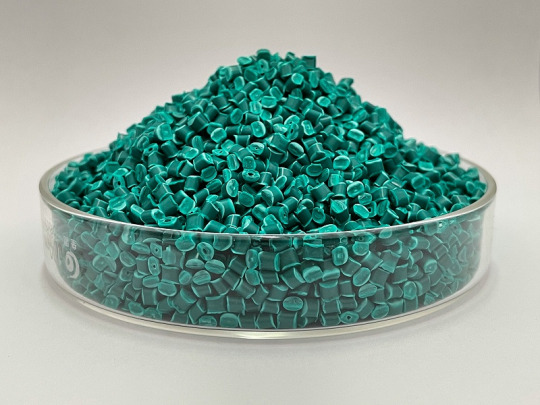
View On WordPress
#Antistatic glass fiber reinforced PA6 impeller#Chopped glass fiber reinforced PP#Compatibilizer#Composite reinforced PP#Engineering plastic reinforced formula#Enhanced PF for chemical anti-corrosion pipelines#Epoxy fiberglass#Epoxy phenolic fiberglass#Flame retardant and antistatic reinforced PA6#Flame retardant glass fiber reinforced PA6 impeller#GF enhanced RJM-PU#Glass fiber reinforced PP#Glass fiber reinforced PVC#Glass fiber reinforced PVDC special-shaped components#High performance glass fiber reinforced PP#High strength unsaturated polyester board#Long glass fiber reinforced PA6#Mica reinforced PP#No. 771 unsaturated polyester fiberglass#plastic modification technologies#plastic reinforced modification formulas#PS coloring formula#thermoplastic reinforced formulations#Thermoset reinforced formulations#Transparent glass fiber reinforced PC#UHMWPE/carbon fiber composite materials#Wollastonite fiber-filled reinforced PP
0 notes
Text
The essential factors contributing to the growth of the global thermosetting aerospace composites market include the increasing demand for lightweight and fuel-efficient aircraft, driven by rising air travel needs and stringent environmental regulations. Technological advancements in manufacturing processes enable the production of complex composite structures with enhanced performance characteristics. In addition, the superior mechanical properties of thermosetting aerospace composites, such as high strength-to-weight ratios and corrosion resistance, make them an attractive choice for aircraft manufacturers.
Data Bridge Market Research analyses that the global thermosetting aerospace composites market which was USD 7.86 Billion in 2023, is expected to reach USD 20.02 Billion by 2031, growing at a CAGR of 12.4% during the forecast period of 2024 to 2031. In 2024, the rubber segment will dominate the market due to the increasing demand from end-use industries. In addition to the insights on market scenarios such as market value, growth rate, segmentation, geographical coverage, and major players, the market reports curated by the Data Bridge Market Research also include in-depth expert analysis, geographically represented company-wise production and capacity, network layouts of distributors and partners, detailed and updated price trend analysis and deficit analysis of supply chain and demand.
0 notes
Text

Recycling the non-recyclable: New epoxy resin resists flames and reduces waste
Empa researchers have developed an epoxy resin that can be repaired and recycled, in addition to being flame-retardant and mechanically strong. Potential applications range from coating for wooden flooring to composites in aerospace and railways.
Epoxy resins are tough and versatile polymers. In combination with glass or carbon fibers, they are used, for example, to manufacture components for aircraft, cars, trains, ships and wind turbines. Such epoxy-based fiber-reinforced polymers have excellent mechanical and thermal properties and are much lighter than metal. Their weakness: They are not recyclable—at least not yet.
Now Empa researchers led by Sabyasachi Gaan at Empa's Advanced Fibers laboratory have developed an epoxy resin-based plastic that is fully recyclable, repairable and also flame retardant—all while retaining the favorable thermomechanical properties of epoxy resins. They have published their findings in the Chemical Engineering Journal.
Read more.
#Materials Science#Science#Recycling#Epoxy#Resins#Flames#Waste#Flame retardants#Polymers#Thermosets#Vitrimers
11 notes
·
View notes
Text
Thermosetting Plastics Market Estimated to Account for A Higher Value By 2031
You can now get the “ Thermosetting Plastics Market Size & Growth Report | 2031” from The Insight Partners. The market's challenges and driving forces are covered in this analysis. The report's findings help businesses assess where they will stand in the Thermosetting Plastics market. This comprehensive set of business-oriented chapters includes all the important market information.
The Thermosetting Plastics market report answers several crucial questions, including:
Which companies dominate the global Thermosetting Plastics market?
What current trends will influence the market over the next few years?
What are the market's opportunities, obstacles, and driving forces?
What predictions for the future can help with strategic decision-making?
What advantages does market research offer businesses?
Which particular market segments should industry players focus on to take advantage of the most recent technical advancements?
What is the anticipated Thermosetting Plastics market growth rate for the market economy globally?
Why The Insight Partners?
Strong Market Research Expertise: The Insight Partners aids businesses in comprehending their target market, encompassing customer preferences, needs, and behaviors. This understanding enables companies to effectively fulfill customer demands, resulting in increased sales and enhanced customer satisfaction.
Targeted Marketing Strategies: We specialize in assisting businesses with comprehensive competitor Thermosetting Plastics market analysis, encompassing the identification of strengths, weaknesses, and Thermosetting Plastics market share. Our goal is to craft powerful marketing strategies that foster a competitive edge and drive business success.
Innovative Solutions: We specialize in assisting businesses in discovering fresh market opportunities and unexplored areas for expansion. Our services encompass identifying new customer segments, analyzing emerging Thermosetting Plastics market trends, and uncovering untapped markets.
Strong Customer Service: With our company, your business can significantly reduce the risk of launching new products or services that might not resonate with your target market.
Continuous Learning: TIP offers businesses unbiased data and valuable insights that can significantly influence decision-making, leading to the implementation of more effective and successful business strategies.
The segment-based research aims to provide customers with an in-depth examination of the opportunities and challenges facing businesses in the Thermosetting Plastics market. It provides precise future estimates of the Thermosetting Plastics market forecast together with a thorough coverage of the major issues affecting the organization. Based on objective market situation coverage, investors may make well-informed selections.On the Basis of Material Type this market is categorized further into-
Amines
Aliphatic
Aromatics
Epoxies
Phenolic
Polyesters
Silicon
On the Basis of Moulding Process this market is categorized further into-
Compression Moulding
Extrusion Moulding
Reactive Injection Moulding
Spin Casting
On the Basis of Application this market is categorized further into-
Adhesives
Aerospace
Automobiles
Consumer Electronics
Safety Equipment
and Synthetic Fibres
Key regions Thermosetting Plastics Market Research Report:
North America (U.S., Canada, Mexico)
Europe (U.K., France, Germany, Spain, Italy, Central & Eastern Europe, CIS)
Asia Pacific (China, Japan, South Korea, ASEAN, India, Rest of Asia Pacific)
Latin America (Brazil, Rest of Latin America)
The Middle East and Africa (Turkey, GCC, Rest of the Middle East and Africa)
Rest of the World
We Understand Business Requirements | We Offer Customised Research
Despite our proficiency in syndicated research solutions, we are committed to providing our clients with individualized service. Tailored market research products assist businesses in making strategic choices. To perfectly meet your needs, our personalized market research goes beyond traditional insights. To obtain significant insights from businesses and provide more detailed insights, we delve further into primary research methodologies.
About Us:
The Insight Partners is a one-stop industry research provider of actionable intelligence. We help our clients in getting solutions to their research requirements through our syndicated and consulting research services. We specialize in industries such as Semiconductor and Electronics, Aerospace and Defense, Automotive and Transportation, Biotechnology, Healthcare IT, Manufacturing and Construction, Medical Devices, Technology, Media and Telecommunications, Chemicals and Materials.
Contact Us: : www.theinsightpartners.com
0 notes
Text
Polyurethane Coatings: A Comprehensive Guide
Polyurethane coatings, commonly known as PU coatings, are a popular protective layer that imparts a smooth and durable finish to a variety of surfaces. Used extensively in different industries, such as furniture, PU coatings boast exceptional properties, making them a preferred choice. Here are some key features that make PU coatings stand out:
Versatility: PU coatings exhibit resistance to abrasion, corrosion, chemicals, and weathering, making them suitable for diverse applications.
Balanced Attributes: These coatings strike a balance between hardness and flexibility, ensuring a robust yet adaptable finish.
Adhesion: PU coatings adhere well to different substrates, enhancing their applicability across various materials.
Customization: They offer flexibility in adjusting gloss levels, colors, and textures to meet specific preferences and requirements.
Ease of Application and Curing: PU coatings, derived from polyurethanes, are relatively easy to apply and cure, providing a user-friendly experience.
Polyurethanes, the building blocks of PU coatings, result from the reaction between polyisocyanates and polyols. Polyisocyanates and polyols, containing isocyanate and hydroxyl groups, respectively, determine the characteristics of the resulting PU coating. For instance, aliphatic polyisocyanates produce coatings with better weathering and color stability, while polyester polyols contribute to improved chemical and solvent resistance.
There are two main types of PU coatings based on their curing mechanism: reactive and non-reactive. Reactive coatings involve a two-component system that cures through direct cross-linking, while non-reactive coatings cure when exposed to moisture, oxygen, or heat.
Benefits and Limitations of PU Coatings:
Benefits:
Excellent mechanical properties, including toughness, flexibility, and elasticity.
Resistance to chemicals, solvents, oils, and fuels.
Durable against abrasion, impact, wear, weathering, UV radiation, and oxidation.
Strong adhesion to various substrates like wood, metal, plastic, and concrete.
Compatibility with other coatings, such as epoxy, acrylic, and alkyd.
Good color and gloss retention, flow, leveling properties, and curing/drying characteristics.
Limitations:
Sensitivity to moisture and humidity during application and curing.
Potential need for a primer or surface preparation for adhesion to certain substrates.
Limited pot life and shelf life.
Higher cost and environmental impact compared to alternative coatings.
SBL Specialty Coatings: A Leading PU Coating Manufacturer in India:
SBL Specialty Coatings stands out as a premier PU coating manufacturer in India, offering a diverse range of products and services tailored for various industries. With over two decades of experience, a state-of-the-art manufacturing facility, and a dedicated research and development center, SBL Specialty Coatings is committed to delivering high-quality PU coatings that meet customer requirements and industry standards. Their expertise ensures the production of top-notch PU coatings, making them a trusted choice in the field.
#specialty Industrial Coatings in india#uv rubber coatings#thermoplastic acrylic paint#antimicrobial clear coat#thermosetting acrylic paint#specialty Coatings#pu clear coat#Industrial Coatings in india#pu coatings manufacturers in india#industrial coating manufacturer in india#coating manufacturer in india#antimicrobial coating spray#industrial coating manufacturers#pu coating paint#antimicrobial coating manufacturers in india#pu coatings#paint manufacturers in punjab#wood coating manufacturers in india
0 notes
Text
Global Thermosetting Plastics Market Is Estimated To Witness High Growth Owing To Increasing Demand For Lightweight and Durable Materials

The global Thermosetting Plastics Market is estimated to be valued at US$ 127,332.15 million in 2022 and is expected to exhibit a CAGR of 4.72% over the forecast period 2023-2030, as highlighted in a new report published by Coherent Market Insights.
A) Market Overview:
Thermosetting plastics are a class of materials that are extensively used across various industries due to their excellent thermal and mechanical properties. These plastics are cured and hardened through irreversible chemical reactions, making them harder and more rigid than thermoplastics. The market for thermosetting plastics is driven by the increasing demand for lightweight and durable materials in industries such as automotive, aerospace, electrical and electronics, and construction. Thermosetting plastics find applications in circuit boards, automotive body parts, electrical insulators, adhesives, coatings, and more. These materials provide excellent heat resistance, chemical resistance, and electrical insulation, making them ideal for use in demanding environments.
B) Market Key Trends:
One key trend in the Thermosetting Plastics Market is the growing demand for eco-friendly materials. With increasing focus on sustainability and environmental concerns, there is a rising preference for bio-based thermosetting plastics over traditional petroleum-based materials. Bio-based thermosetting plastics are derived from renewable resources such as plant oils and starch, reducing the carbon footprint and environmental impact of the manufacturing process. These materials offer similar properties as traditional thermosetting plastics while being more sustainable and recyclable.
For example, BASF SE, one of the key players in the market, has developed a range of bio-based epoxy resin systems for various applications. These resins are based on renewable raw materials such as succinic acid derived from plant oil. They provide similar performance and processability as traditional epoxy resins, while reducing the overall environmental impact.
C) PEST Analysis:
Political: The thermosetting plastics industry is regulated by various government agencies and authorities to ensure product safety and environmental compliance. Regulatory frameworks and standards vary across different regions, influencing the market dynamics and opportunities.
Economic: The growing industrialization and increasing GDP of emerging economies such as China, India, and Brazil are driving the demand for thermosetting plastics. These countries have witnessed significant investments in infrastructure development, automotive production, and electronics manufacturing, creating a favorable market landscape for thermosetting plastics.
Social: The increasing consumer demand for lightweight and fuel-efficient vehicles, smart devices, and sustainable construction materials is propelling the adoption of thermosetting plastics. These materials offer improved energy efficiency, reduced emissions, and enhanced product performance, aligning with the evolving social preferences.
D) Key Takeaways:
The global Thermosetting Plastics Market is expected to witness high growth, exhibiting a CAGR of 4.72% over the forecast period, due to increasing demand for lightweight and durable materials. The automotive industry, in particular, is driving the demand for thermosetting plastics due to their weight reduction potential and ability to withstand harsh operating conditions.
Key players operating in the global Thermosetting Plastics Market include Alchemie Ltd., Asahi Kasei Corporation, BASF SE, BUFA GmbH & Co. KG, Celanese Corporation, Covestro AG, Daicel Corporation, DSM, Eastman Chemical Company, INEOS, Kanoria Chembond Pvt. Ltd, Lanxess AG, LG Chem, Mitsubishi Engineering-Plastics Corporation, Nihon Gosei Kako Co. Ltd, Polynt SpA, Satyen Polymers Pvt. Ltd, Showa Denko KK, Solvay, Sumitomo Bakelite Co. Ltd, and U-PICA Company Ltd. These key players are focusing on product innovation, strategic collaborations, and capacity expansions to gain a competitive edge in the market.
#Thermosetting Plastics Market#Advanced Materials#Thermosetting Plastics Market Growth#Thermosetting Plastics Market Analysis#Thermosetting Plastics Market Forecast#Thermosetting Plastics Market Future#Thermosetting Plastics Market Key Players#Thermosetting Plastics Market Overview
0 notes